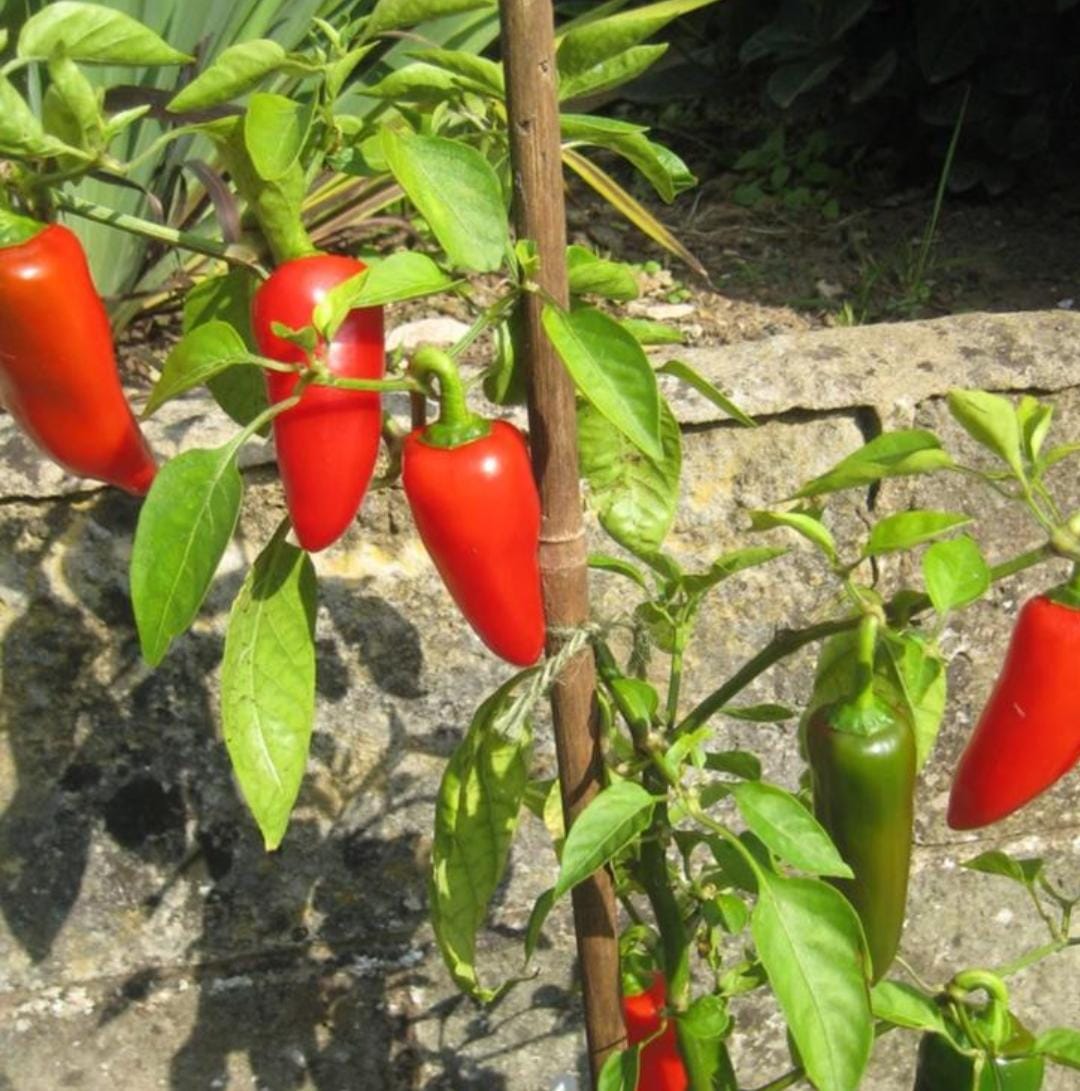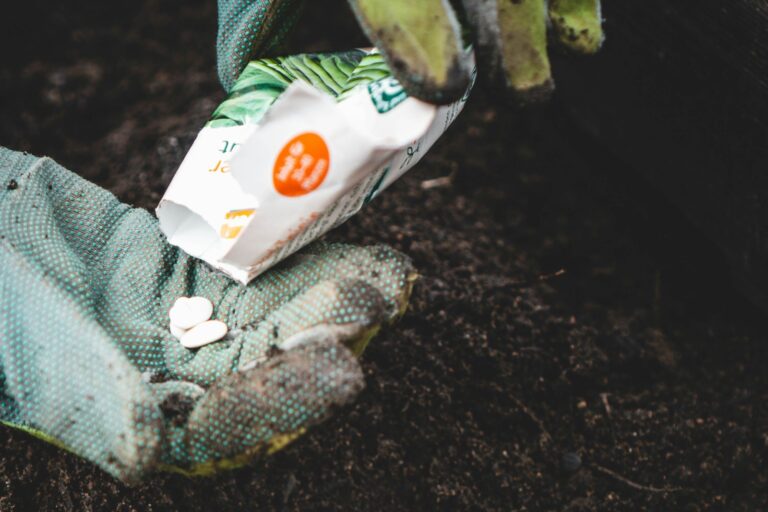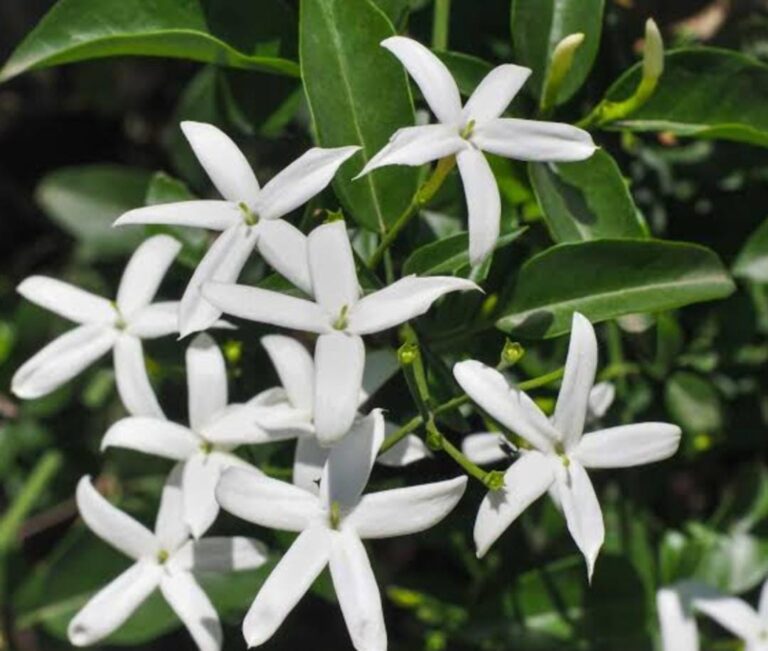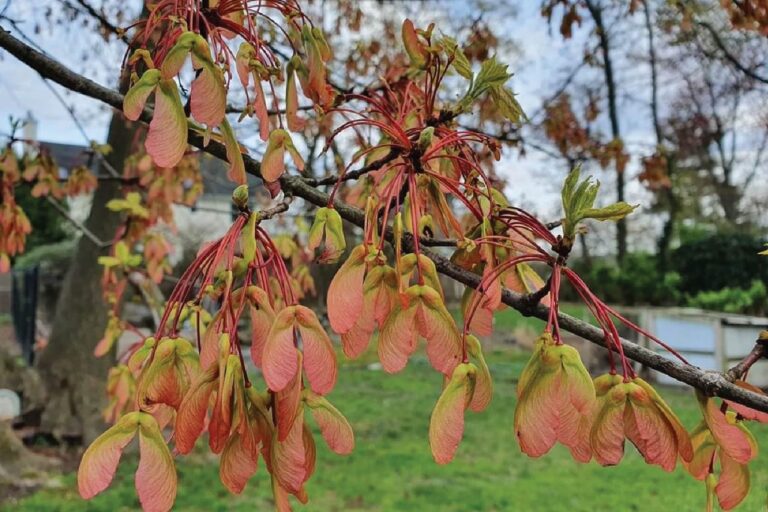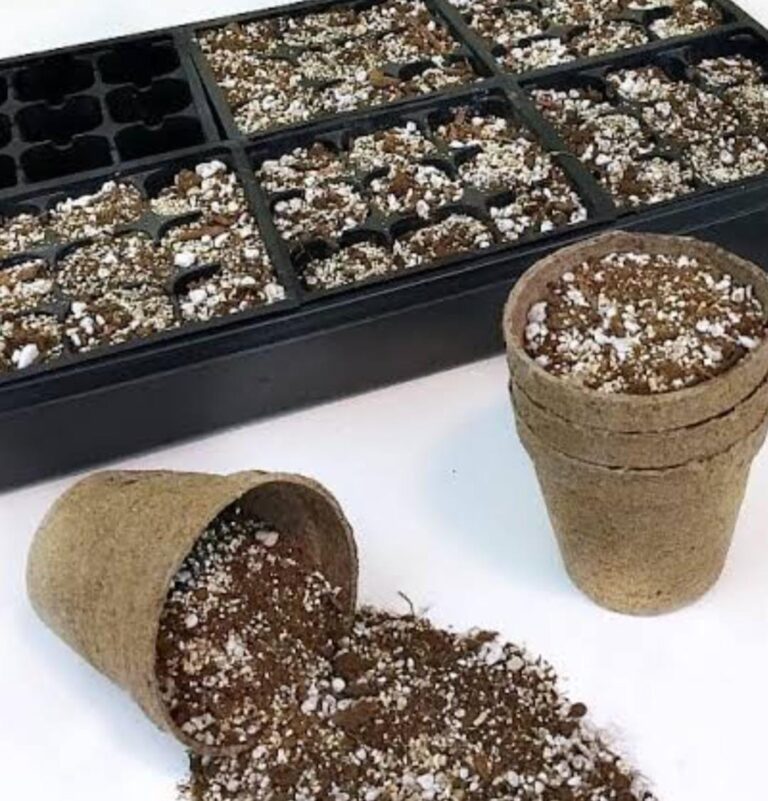Fresno Pepper vs. Jalapeño: 4 Fascinating Facts
Introduction
Among the various chili peppers, the Fresno pepper (Capsicum annuum) stands out for its balanced heat, flavor, and versatility. Peppers have carved out a place in global cuisines as both culinary treats and medicinal gems. On the other hand jalapeño peppers (Capsicum annuum) are medium-sized chili peppers, known for their mild-to-moderate heat and bright, slightly sweet flavor. They’re one of the most popular chilies worldwide and are widely used fresh, pickled, roasted, or stuffed in many cuisines. Fresno peppers, although resembling jalapeños, have distinct characteristics that set them apart. This blog delves deeply into the biology, nutritional science, cultural significance, and horticultural elements of Fresno peppers, combining research-backed findings with fascinating storytelling.
Origins and History
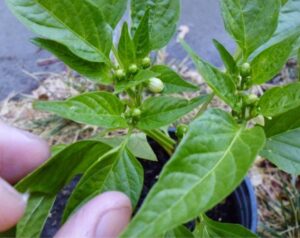
Clarence Brown Hamlin developed the Fresno pepper in Fresno, California, in 1952. It was intentionally bred to blend adaptability with a heat level that would appeal to a wide range of consumers. Unlike wild Capsicum species native to South America, the Fresno was intentionally cultivated within the domesticated Capsicum annuum group, which also contains bell peppers, cayenne, and as mentioned above jalapeño.
What distinguishes these peppers is their hybrid-like nature: they preserve the flexibility of Capsicum annuum while delivering subtle flavors that bridge the gap between mild chilies and hotter kinds. Since their inception, they have grown in favor in California’s Central Valley before spreading to foreign kitchens.
Botanical Classification
- Kingdom: Plantae
- Family: Solanaceae
- Genus: Capsicum
- Species: Capsicum annuum
- Varietal type: Fresno
The plant normally develops to be 18-30 inches tall, producing fruits that range in color from green to orange-red, with a glossy scarlet hue when fully mature. Fresno peppers thrive in warm areas, drawing on California’s Mediterranean climate of hot days and chilly nights.
Heat Profile and Scoville Scale
Fresno peppers have a moderate Scoville Heat Unit (SHU) rating, ranging from 2,500 to 10,000 SHU. These peppers are similar to jalapeños but have a more fruity, smoky, and nuanced flavor. Their heat is gentler when green, but increases in pungency as they ripen.
The ingredient that causes their heat is capsaicin, a bioactive alkaloid found in the placenta and seeds. Food chemistry research demonstrates that capsaicin serves as both a plant defense mechanism against herbivores and a metabolic stimulant in human physiology.
Nutritional Composition
These fresh-harvested bounties are more than simply a spice; they are nutritious powerhouses. Per 100 grams, they typically provide:
Calories: 30.
Carbohydrate: 6 grams
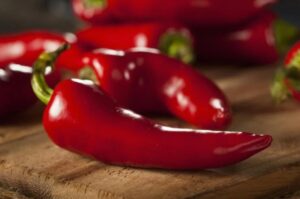
Protein: 1 g.
Dietary Fiber: 2 grams
Vitamin C: 140 mg (more than 150% of the daily requirement).
Vitamin A: 1,200 IU.
Vitamin B6: 0.5 mg.
Potassium: 300 mg.
Folate, magnesium, and manganese in tiny levels.
Their high vitamin C content makes them a good antioxidant source, while carotenoids such as capsanthin and beta-carotene help with eye health and immune support.
Health Benefits
As we have discussed in earlier blogs that all types of peppers have an impact on our general health. Let’s take a look at how this chili pepper affects the human body.
1. Metabolism and Weight Management
Capsaicin is known to boost thermogenesis, which increases calorie expenditure and promotes fat oxidation. Clinical studies show that modest chili consumption can increase fullness and reduce cravings, making Fresno peppers an ally in healthy diets.
2. Cardiovascular Protection
According to research published in the Journal of Agricultural and Food Chemistry, capsaicin helps to lower serum cholesterol while also enhancing blood vessel flexibility. The potassium concentration also aids in blood pressure management.
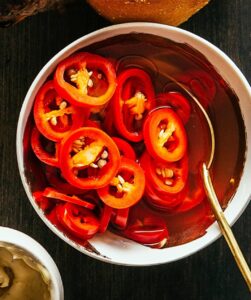
3. Antioxidant Defense
The combination of vitamin C and carotenoids in Fresno peppers fights free radical damage, minimizing the risk of cellular degeneration, premature aging, and chronic diseases.
4. Immune Boosting
Vitamin C improves leukocyte activity, while vitamin A builds mucosal barriers, providing a two-pronged defense against infection.
5. Pain Management
Topical capsaicin creams made from chili peppers are used to treat neuropathic pain, arthritis, and muscular stiffness, demonstrating how Fresno pepper components transcend beyond the kitchen and into medicine.
Culinary Applications
Fresno peppers shine in a variety of cuisines due of their adaptability.
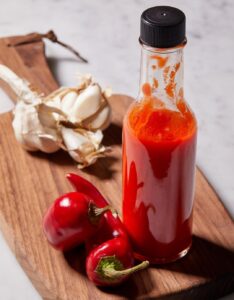
- Fresh Application: Diced raw Fresno peppers provide crunch and fire to salsas, guacamole, and fresh relishes
- Cooking: When sautéed, roasted, or grilled, their taste develops, making them ideal for soups, stir fries, and stews
- Pickling: Vinegar-brined Fresno peppers are popular in tacos, burgers, and charcuterie boards
- Fermentation: Their thin walls and fruity undertones make them perfect for hot sauces, resulting in sauces that balance heat and tang
- Smoking and drying: Smoked Fresno peppers can mimic chipotles, giving them a distinct Californian flavor.
Chefs admire Fresno peppers for their balance of spice and flavor, which does not overpower but rather improves the palate.
Fresno vs. Jalapeño
Despite looking identical, the two peppers differ in important ways:
1. Heat
Jalapeños are known for their moderate heat, typically measuring between 2,500 to 8,000 on the Scoville Heat Unit (SHU) scale. In contrast, Fresno, which is a slightly sweeter variety of chili pepper, can have a heat level that peaks at around 10,000 SHU. This makes Fresno generally spicier than jalapeños, appealing to those who enjoy a bit more kick in their dishes.
2. Flavor
Jalapeños offer a distinctive flavor profile characterized by their grassy and vegetal notes, which lend a fresh and crisp element to dishes. On the other hand, Fresnos, particularly when they have ripened to a rich red color, exhibit a more complex taste, showcasing fruity undertones combined with a subtly smoky essence. This contrast makes Fresnos an excellent choice for adding depth and warmth to various culinary creations.
3. Culinary Use

Jalapeños are widely celebrated in Tex-Mex cuisines, where their distinct heat and flavor enhance a variety of dishes, from salsas to nachos and tacos. On the other hand, Fresno peppers are known for their slightly fruitier taste and moderate heat, making them an excellent choice for crafting flavorful sauces or as a vibrant addition to pickling recipes, where they contribute both color and a mild heat.
4. Maturity
Jalapeños are generally harvested while they are still green, as this is when they have their firm texture and mild heat. In contrast, Fresno are often best when they are allowed to fully ripen, developing a vibrant red color that enhances their sweetness and flavor complexity. The maturation process of Fresno not only intensifies their taste but also makes them a preferred choice for certain culinary applications, as the richness of the red peppers brings a different dimension to dishes.
As mentioned above these peppers possess a distinctive culinary identity that sets them apart from jalapeños. With their vibrant red or green hues, Fresno peppers offer a slightly fruitier flavor profile and a moderate heat level, ranging from 2,500 to 10,000 Scoville Heat Units. This makes them a versatile ingredient in various dishes, from salsas and sauces to stir-fries and marinades. Unlike jalapeños, which tend to have a crisper texture and a more straightforward heat, Fresno peppers are often favored for their rich, smoky undertones, making them an excellent choice for adding depth to both fresh and cooked recipes. Their unique characteristics make them a valuable addition to any kitchen, enhancing a wide array of culinary creations.
Agricultural Significance
Fresno peppers grow in warm, frost-free climates with well-drained soil and ample sunlight. They take 70-90 days from transplant to harvest, making them ideal for small-scale farms and household gardens. Their modest insect resistance and somewhat compact growth habit appeal to both urban gardeners and commercial growers.
California’s Central Valley remains the principal production hub, but cultivation has spread to Mexico, South America, and portions of Asia due to worldwide demand.
Environmental Role
Fresno peppers, like other pepper plants, attract pollinators such as bees during flowering, which helps to increase biodiversity. Their capsaicin not only deters herbivores, but it also influences ecological interactions by promoting bird dispersal—birds ingest the fruits without perceiving heat, dispersing the seeds across long distances.
This ecological function demonstrates how pepper plants developed methods for reproductive success.
Fresno Pepper in Cultural Context
In California’s Central Valley, these peppers have become synonymous with local agricultural innovation. It symbolizes the region’s importance in cultivating crops that connect traditional and modern food cultures. Fresno peppers are commonly used in fusion cuisines around the world, especially when cooks want to blend heat with fruity overtones.
Their use in sustainable gastronomy emphasizes the desire for locally sourced, flavorful produce. Farmers’ markets around the United States sell fresh Fresno peppers as part of the seasonal and farm-to-table movement.
Preservation and Storage
To ensure that the quality is maintained, it is essential to implement specific practices and measures. This includes utilizing high-quality materials, adhering to strict production standards, and conducting regular quality control assessments throughout the process. Furthermore, providing ongoing training for staff and encouraging a culture of continuous improvement can significantly contribute to preserving the desired level of quality in the final product. By carefully monitoring every stage of development and being proactive in addressing potential issues, we can consistently uphold the standards we strive for.
Fresh Storage
To maintain freshness and quality, store in breathable bags and place them in the refrigerator, where they can be kept for up to ten days. This method helps to prevent moisture buildup while allowing proper air circulation, ensuring your items stay in optimal condition throughout the storage period.
Presrvation
To preserve for long-term storage while maintaining the highest possible nutritional value, carefully slice the peppers into uniform pieces. Once sliced, promptly freeze them to lock in their freshness and nutrients. This method reduces the risk of spoilage and helps retain essential vitamins and minerals, ensuring your food remains as nutritious as possible for future use.
Drying
Air-dried or dehydrated peppers possess a concentrated and intense flavor profile, which enhances their suitability for use in various spice blends. The drying process removes moisture from the peppers, concentrating their natural sugars and essential oils, resulting in a rich, robust taste that can elevate both simple and complex dishes. This concentrated flavor allows them to add depth and a nuanced heat, making them a popular choice among chefs and home cooks alike for seasoning, marinades, and sauces.
Pickling and Canning
Extend the shelf life of the product while ensuring that the distinctive fruity flavor characteristics remain intact and are not compromised during storage. Focus on methods that enhance preservation without altering the taste profile that defines the product’s appeal.
Fresno peppers can be enjoyed all year thanks to these preservation techniques.
Scientific Research and Future Applications
Modern research is looking into how these peppers and other Capsicum annuum types can improve functional meals and nutraceuticals. Researchers are especially interested in:
- Capsaicinoid variation across ripening stages
- Genetic diversity that could produce heat-adjusted hybrids for different culinary preferences
- Bioactive compounds like flavonoids and phenolic acids may provide anti-inflammatory and anticancer properties.
Biotechnological techniques may soon result in Fresno pepper varietals with bespoke heat levels, longer shelf life, and more nutrient content.
Culinary Inspiration
Imagine a charred Fresno pepper salsa made by roasting the peppers until blistered and then blending them with garlic, lime juice, and cilantro. The result is a smoky, sour sauce ideal for tacos. Alternatively, a Fresno pepper-infused oil can add a spicy and fragrant twist to ordinary pasta meals.
The popularity of Fresno peppers stems not only from their heat, but also from their ability to compliment and amplify the natural flavors of other foods.
Conclusion
The Fresno pepper is more than simply a chili; it’s a combination of science, culture, and gastronomy. From its California roots to its global culinary success, it has captivated foodies, chefs, and scientists alike. The Fresno pepper, with its nutritional value, mild heat, and ecological relevance, represents the junction of human ingenuity and natural variation.
This is ideal for individuals looking for a pepper that gives spice without being overbearing, nutrients without sacrificing flavor, and cultural relevance with authenticity. Whether eaten fresh, pickled, or in a blazing hot sauce, it is destined to be a delectable symbol of modern cuisine.

